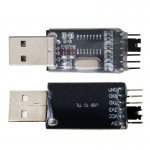- Joined
- Sep 2, 2013
- Messages
- 4
I thought I would start a new thread on this since it was hard to find current information in the old ones.
I had a Pro-97 and Pro-164 with the RadioShack 20-047 USB cable.
This worked fine for these radios.
I then bought a used Whistler 1065 to log P25 traffic.
The 20-047 worked fine for programming, but when I dumped trunking data from the scanner to the PC, it would lock up the cable and scanner after about 10 minutes of use.
I thought this might be because the cable was more than a decade old and was starting to fail.
Unfortunately, RS no longer sells the cable and Amazon's price seems rather high for what it is.
With the help of the forum I was able to find pinouts and details of the original cable. (Thanks!)
So here we are in 2017 and we all tinker with electronics (I assume).
This is a diagram I made to show how I built my own modern programming/data logging cable.
** Parts Required: **
** Text Instructions ***
** Diagram **

I had a Pro-97 and Pro-164 with the RadioShack 20-047 USB cable.
This worked fine for these radios.
I then bought a used Whistler 1065 to log P25 traffic.
The 20-047 worked fine for programming, but when I dumped trunking data from the scanner to the PC, it would lock up the cable and scanner after about 10 minutes of use.
I thought this might be because the cable was more than a decade old and was starting to fail.
Unfortunately, RS no longer sells the cable and Amazon's price seems rather high for what it is.
With the help of the forum I was able to find pinouts and details of the original cable. (Thanks!)
So here we are in 2017 and we all tinker with electronics (I assume).
This is a diagram I made to show how I built my own modern programming/data logging cable.
** Parts Required: **
- x1 Arduino - any will do, but preferably use one with the 3.3v TTL and 8MHz crystal.
If you have a 5v board then you can add some resistors to reduce the arduino voltage to 3.3v and it works just as well.
- x1 3.5mm Stereo jack - Rip one out of something, or just hardwire a cut 3.5mm cable if you don't have a jack.
- x4 jumper wires - You can also solder a stereo cable to the Arduino if not using a jack or breadboard.
** Text Instructions ***
- Short out the reset (RST) pin to the ground (GND) pin.
This bypasses the arduino's processor and makes it act as a USB-Serial device.
- Connect the Sleeve of the 3.5mm cable to the Ground on the Arduino.
- Connect the Tip of the 3.5mm cable to the Rx on the Arduino, it may be labeled as TX with an arrow indicating that it's your serial devices Tx pin.
- Connect the Ring of the 3.5mm cable to the Tx on the Arduino, it may be labeled as RX with an arrow indicating that it's your serial devices Rx pin. If your Arduino board has 5v with 16MHz crystal, then you will need to wire in a resistor voltage divider. I didn't diagram it because I didn't need it, but you connect a 5k resistor to a 10k to ground. Double check your voltage before connecting it to your scanner. If you're only using the connection for data logging like I was, then you won't need to connect this pin at all.
- No code is necessary on the Arduino unless you won't to add in some automation or device actions.
- Plug your Arduino in via USB and then a stereo cable to the jack and scanner.
- The driver should already be installed and you're good to go!
** Diagram **

Last edited:


